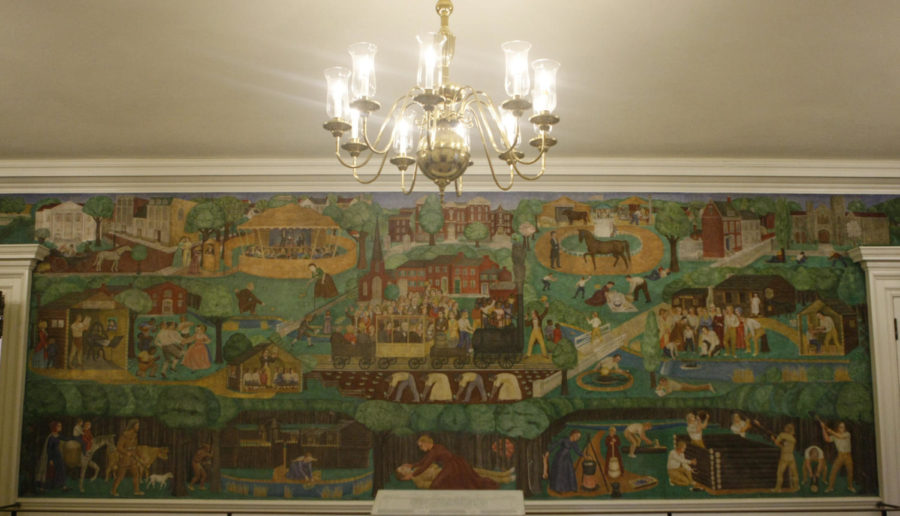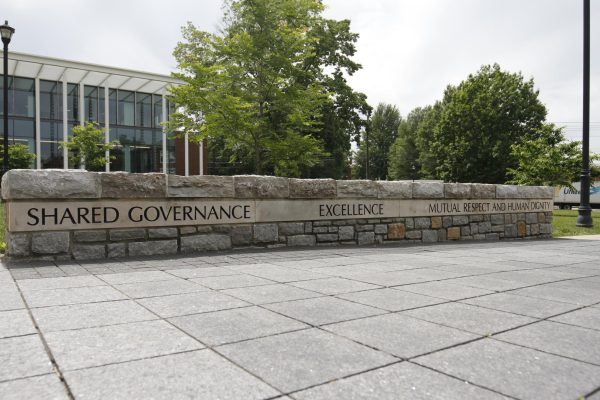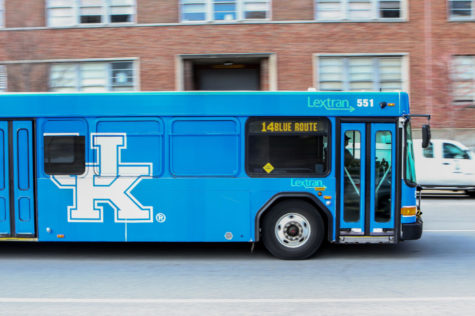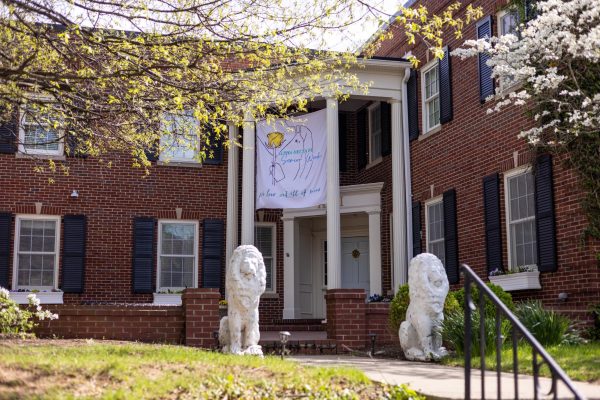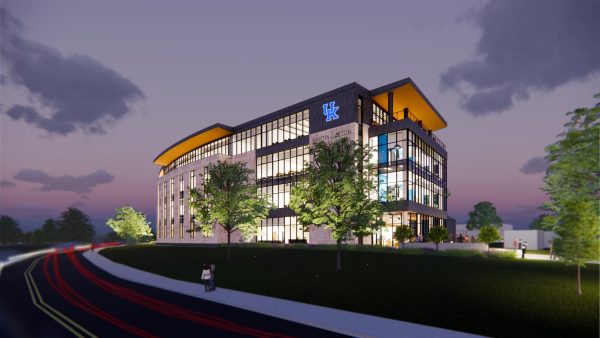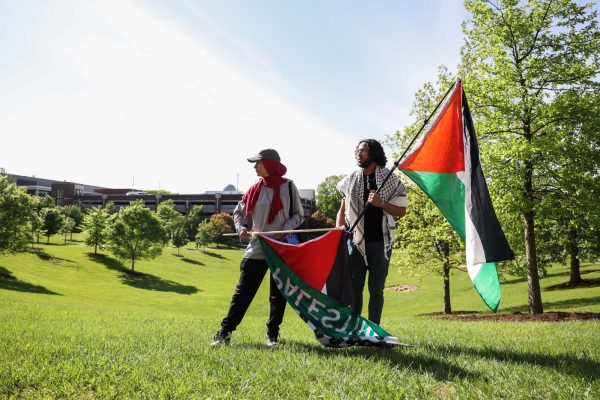UK under legal pressure for planned removal of Memorial Hall mural
Ann O’Hanlon’s 1934 mural located in UK’s Memorial Hall has been the subject of controversy for several years, due to its depictions of people of color. On Nov. 22, president Eli Capilouto announced that it would be removed and relocated. Photo by Joel Repoley | Staff file photo
December 1, 2022
After years of controversy surrounding a mural in Memorial Hall, UK president Eli Capilouto announced the university’s plan to remove and relocate it on Nov. 22.
The mural illustrates segregation of races by showing people of color hunched over working on farmland. Both African American and Native American individuals are represented in the mural.
According to Harriet Fowler, a contributing author for The Kentucky Review, Ann O’Hanlon completed in 1934 for the Public Works of Art Project. The Civil Works Administration funded the Public Works of Art Project, which provided job opportunities for artists to embellish non-federal structures and parks.
Student protests of this mural date back years. In 2019, the Black Student Advisory Council partnered with the Basic Needs Campaign to conduct a sit-in at the Main Building on campus and demanded that the mural be taken down.
After the case of assault of a UK student in November, Capilouto said in a campus-wide email he is committed to making changes on campus to promote diversity, equity and inclusion. The removal of the mural is included in these changes.
However, moving the mural is a legally complex process.
“We don’t have a specific timeline for removal and relocation as we are in court-ordered mediation with Wendell Berry about that process,” UK spokesperson Jay Blanton told the Kernel in an email. “But we are committed to doing so.”
Berry is a University of Kentucky alumnus and author who has deep-rooted agrarian values, according to the Berry Center website. According to The New York Times, Berry’s lawsuit argues that the mural is a federal project belonging to the people of Kentucky – therefore restricting Capilouto from removing it.
“Mr. Berry said that they are also trying to prevent the potential removal of another work, one by a Black artist, Karyn Olivier, that was commissioned by the university and installed in the same campus building in 2018 in response to the mural,” The New York Times said.
Olivier’s work is in the vestibule of Memorial Hall and is called, “Witness.” Her work took the figures from O’Hanlon’s mural and put them on the gold-leafed ceiling.
According to Whitney Hale, a contributor for UK Libraries, Olivier said, “I hope one reading of my use of gold leaf is to elevate the oppressed represented – those who were deemed lowly – to the divine.”
Olivier said her work is reliant on the 1934 mural and removing it would censor hers in the article.
Blanton told the Kernel the plan to move the mural has been in motion since June when the Board of Trustees approved multiple construction projects.
Members of the student body are confident that this is a step in the right direction to increase diversity, equity and inclusion.
“Now that they (UK) are taking the initiative to listen to student responses and take it down, I think it provides some closure,” Tyler Johnson, a senior computer science major, said.
With the imminent removal of the mural, students voiced opinions about how to replace it.
“Representing history, making sure people still know what happened is very important, so maybe using a mural that is uplifting people of color in those communities is a better approach than having that kind of mural,” Brooke Hall, a freshman agricultural and medical biotechnology major, said. “Something that shows the positive side of colored communities and their history.”
While there is an overarching consensus among UK and the surrounding community that the removal is a positive change for the campus, there is still lingering criticism about how the University is responding to the act of racial violence as a whole.
“The law requires that the employer or the organization takes immediate and appropriate action … looking at UK’s response to this issue it looks like they’re on the right track,” Raymond Sexton, the executive director for the Lexington-Fayette Urban County Human Rights Commission, said. “Obviously there is still a lot of distrust with the student body.”
Blanton told the Kernel that going forward the university will be forming a committee to recommend what will best fit into the new space.
“We will work to tailor an initiative to meet the needs of our campus and our goals as a diverse and inclusive community,” Blanton said.









































































































































